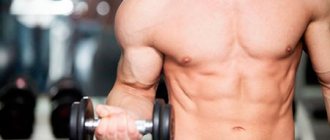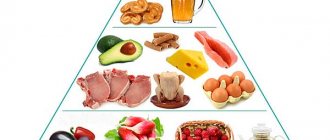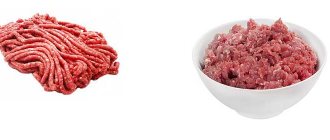Why do we get fat?
Let's try to figure out together what the essence of the fat burning process is
- First of all, we note that fat burning is just part of a complex process in the human body, during which accumulated fats are broken down and special fatty acids are released for later use.
- To get rid of body fat, and mainly stubborn fat, you first need to solve some metabolic problems. After all, initially they influence the deposition of fats in the body.
- Otherwise, when at least one of the problems remains unresolved (for example, high intoxication or insulin resistance), fat fibers have reasons for future fat accumulation, even if current reserves are burned.
The accumulation and breakdown of fats is part of the regulatory process.
This allows the body to protect itself from such basic problems:
accumulations of toxins that can harm vital organs; accumulation of cholesterol and lipids, which can cause diabetes and insulin resistance; decrease in vital levels of a hormone called estrogen. This is very dangerous for the female body, because estrogen greatly influences the female body and is responsible for the characteristics characteristic of women, namely: genitals, figure, breasts, bone mass, placement of subcutaneous fat, sexuality, etc.
Thus, a decrease in estrogen leads to metabolic disorders, including cognitive difficulties, as well as reproductive and sexual functions.
All of the above gives us the right to consider accumulated fat as a desperate attempt by the body to protect itself from increasing levels of toxins, insulin resistance and decreasing estrogen levels.
Consequently, all methods aimed at eliminating the mentioned problems will help get rid of at least some of the main biological causes of fat accumulation and accelerate its burning in the body.
Obviously, you are now thinking that getting rid of accumulated fat is simply unrealistic, because some of it is simply necessary for the human body to survive. Indeed, it is impossible to completely remove all fat, but it is quite possible to reduce its reserves to the lowest level when the body can still function effectively.
How does fat leave the body?
There is a myth that fat is the foundation for muscle. This is not true, muscle is made up of protein. There is no way fat can turn into muscle. But still they interact with each other. Fat works for muscles during heavy physical activity. When glycogen runs out, muscles take energy from fat tissue. The algorithm is simple: carbohydrates are used first, then fat is burned, and protein is used last. During muscle recovery, after exercise with weights, with a lack of carbohydrates, fat also burns, since during this period the muscles need strength. The result is that we remove fat by contracting muscles.
During metabolism, fats form water. Water leaves the body through the sweat glands (pores) and the urinary tract. This type of fat burning occurs during cardio exercise and fast aerobic training.
The process of burning fat due to the work of muscle fibers takes longer than the conversion of fat into water. We conclude that in order to quickly lose weight, you need combined training, cardio and strength. Running on a treadmill after strength training will lead to the desired result. When we run, fat is burned only during the process, and during strength, heavy exercise, fat burns even after training. We do double damage to destroy fat, and we get the desired result - high-quality muscles, a minimum of fat.
And the materials in this video will tell you how you can measure the amount of fat in the body.
httpv://www.youtube.com/watch?v=embed/X-tGl8J1Muc
Possible pathologies
Why does fat appear in the urine of adults? The causes of this deviation are the following diseases:
- nephrotic syndrome;
- diabetes;
- pancreatitis;
- cholecystitis;
- injuries;
- chyluria;
- advanced stage of obesity.
Elevated levels of lipids in urine are often detected after surgical interventions. During operations, the doctor has to cut through fatty tissue and blood vessels. This causes lipids to enter the bloodstream and from there into the kidney tubules. Postoperative lipuria is more common in overweight patients. In this case, changes in the composition of urine are temporary and disappear on their own.
The reason for the increased concentration of fat in the urine in an adult patient can be serious errors in nutrition. If a person constantly abuses foods rich in lipids, then the excess of these substances exits through the kidneys. This can subsequently lead to severe metabolic disorders and obesity. In this case, you urgently need to reconsider your diet.
Next, we will consider in detail the possible diseases that are accompanied by lipuria.
Can breathing help with weight loss?
A reasonable question arises: if a person’s fat turns into carbon dioxide as a result of losing weight, maybe it is necessary to breathe deeper, more often or rhythmically to speed up this process? If only everything were so easy... I really want to say “yes”... but, unfortunately, no.
All these thoughtless actions can only lead to hyperventilation, dizziness and general weakness. But controlled deep breathing can also have many benefits, such as relaxing and relieving tension in the mind and body, as well as sending more oxygen to the muscles. Breathing can even minimize muscle fatigue while running. But this path has nothing to do with losing weight.
The only way you can increase the amount of carbon dioxide you exhale is through physical activity.
Of the interesting news on this topic, I would note the following. Just by getting out of bed and getting dressed in the morning, you double your metabolism. In other words, if you tried on outfits all day long, you would exhale 1200 grams of carbon dioxide. Going for a walk triples your metabolism, as does vacuuming, cleaning the house, or cooking in the kitchen.
Thus, now that we know where fat leaves the body and in what way, we can formulate the key to effective weight loss: exercise, do not overeat, and stick to a balanced low-fat diet.
Are you hoping to compare your weight before and after losing weight later this year? Then move. Even if you just start adding a walk in the fresh air every day from today, this alone will already start the process of removing fat from your body.
Which part of the body loses weight first in girls, women and men?
Due to the individuality of each organism, weight loss occurs differently for everyone, and certain conditions are required. But experts have identified the main points characteristic of the gender and age of the person losing weight.
httpv://www.youtube.com/watch?v=embed/x-VPO7zh-Lc
With a low-calorie diet, first the volume disappears from the face, then the fat burns in the shoulders and hands, only after that the volume of the legs, hips, abdomen and chest decreases. But in some cases, those losing weight note a loss of weight in the shoulder blades, neck and back of the head, while the face remains unchanged.
Photo: How your face becomes thinner when losing weight
This process is due to the fact that fat on the face has a protective function, and not a saving one, as in other parts of the body, protecting the face from frost, wind or mechanical influences. Therefore, often the face can begin to lose weight only after the percentage of fat in other parts becomes significantly smaller.
Men have an android body type: thin legs, defined muscles and a narrow waist. But if you are overweight, fat is deposited first in the waist area, only then in other areas. When losing weight, the opposite is true - the legs, arms, waist and abdominal area, shoulders, and then the face lose weight.
Fat deposition in the female body occurs according to the gynoid type, i.e. First of all, the buttocks and stomach become fat, only then the process affects the upper parts. In this case, weight loss occurs differently: those areas that are the last to accumulate fat begin to decrease first due to the low fat content. Such a process is inevitable at any age of a woman, whether she is 20 or 45 years old - the same, which is due to physiology.
Photo: how the body changes when losing weight
Often women are faced with such a problem as losing weight in their breasts, while the problem areas remain unchanged. This process is due to the fact that the breast consists to a greater extent of adipose tissue and to a lesser extent of the mammary gland. With insufficient intake of calories into the body, namely healthy fats, it leads first of all to breast reduction and only then waist and hips.
Such jumps can lead to loss of breast skin tone and sagging, to prevent this, when losing weight you should consider the following:
- the diet should be rich in protein foods, which will strengthen the chest muscles;
- consume enough amino acids daily, found in sufficient quantities in red fish;
- meals should be frequent, at least 5-6 times;
- You should perform a set of exercises for the chest muscles.
When losing weight, belly fat is the last to be lost, which may be due to the following reasons:
- the presence of diabetes mellitus - the disease requires the use of slow medications that slow down metabolism, leading to weight gain, and also causes an increase in appetite;
- body type – if a woman has an “apple” body type, then she is unlikely to be able to achieve a thin waist;
- excess of the stress hormone – cortisol.
Losing weight in one area or another depends on the chosen running style:
- sprinting: calves and legs lose weight;
- sports: the main volume of load occurs on the buttocks;
- jogging: the load falls on the back of the thigh and buttocks.
It should be remembered that even in this case, weight loss will occur evenly, but this approach will speed up the process of reducing the fat layer locally.
Why should you exercise for at least an hour to burn fat?
Any movement we make requires energy expenditure. The main energy molecule is ATP (adenosine triphosphoric acid) from which calories are formed. It is formed during the breakdown of carbohydrates and fats.
During physical activity, carbohydrates are primarily “burned” to produce ATP energy. It is these compounds that are the simplest and most accessible, since they are constantly present in the blood plasma. When their concentration decreases, the body begins to use reserves. Simple blood sugar is enough for only 10 minutes of aerobic exercise. During aerobic exercise, the most important thing is breathing control, since the appearance of shortness of breath leads to a lack of oxygen necessary for the process of burning calories.
Energy reserves include two main compounds: glycogen and fats. The breakdown of protein compounds should not occur, since they are building materials and their catabolism may lead to the development of serious pathologies.
Glycogen metabolism
The main storage of glucose in the body is glycogen. After eating, excess glucose entering the bloodstream under the influence of insulin is utilized in the muscles and liver, where glycogen is formed. The main depot is the liver, but muscle glycogen is the first to be consumed during intense physical activity.
The more muscle fibers there are, the less time it takes for muscle glycogen stores to deplete. Once the energy from the above sources has run out, liver glycogen begins to be metabolized.
Fat metabolism
The second source of glucose when it decreases in the blood is fat catabolism. It is much more complex than the breakdown of glycogen and takes longer. Since first fat, breaking down into triglycerides and fatty acids, enters the blood from lipids and only then, after entering muscle cells, burns kilocalories, metabolizing to glucose.
During the training process, fat metabolism begins after about an hour of physical activity. Then, after exercise, the muscles restore glycogen deficiency at the expense of fat deposits. Static and power loads lead to an increase in muscle mass, which, in turn, increases energy consumption and accelerates fat burning.

Also, the acceleration of fat burning occurs under the influence of many hormones, mainly anabolic. This occurs due to the fact that they trigger the growth of muscle fibers, which requires energy expenditure. The greater the muscle mass, the more energy is needed to work the muscles, therefore, fat burning is significantly accelerated.
Features of fat burning in the body
One should take into account the fact that the source of energy in the human body is not only fats, but also glycogen. The second is a stronger source of energy, so the body first strives to use it, and then moves on to burning fat. Glycogen is enough for about 30-35 minutes of active work, which is why the duration of the workout should be longer than this time period. Otherwise, you may not achieve fat burning.
A person trying to lose weight can choose any physical activity that is convenient for them. This can be either strength training or aerobic training. The ideal option would be a combination of both types of load. By choosing only one option, a person solves only part of the problems and sooner or later the effectiveness of such activities will be much lower. Strength training will help increase muscle mass, which is quite good, because the more muscle you have, the faster the fat burning process.
It is also important to understand that fat is a source of energy that is not concentrated in one specific place, but is distributed throughout the body, albeit unevenly. Therefore, even training your abs will cause fat to be burned throughout the body, and not just from the stomach. Remember, losing weight in the stomach is the hardest part
This place belongs to the problem area. Since there is much less blood flow here than in the rest of the body. Cardio training for the abdomen is practically useless, so do not be lazy to use additional means, for example, doing body wraps. Even such a simple procedure will significantly increase blood flow to the subcutaneous fat on the abdomen and the process can be moved from the “dead” point
Remember, losing weight in your belly is the hardest part. This place belongs to the problem area. Since there is much less blood flow here than in the rest of the body. Cardio training for the abdomen is practically useless, so do not be lazy to use additional means, for example, doing body wraps. Even such a simple procedure will significantly increase blood flow to the subcutaneous fat on the abdomen and the process can be moved from the “dead” point.
Do you intend to seriously change the situation and get rid of unnecessary things once and for all? Approach the issue comprehensively.
Dedicate time not only to training, but also to nutrition carefully, think over your entire diet. If this is not done, then hormonal levels can play a cruel joke on you, and even with the most intense workouts, your weight will remain in one pore.
Remember one golden rule: no workout or diet can bring you good results if you have to endure too strict restrictions for this. Instead, enjoy eating your favorite foods, but make sure you stay within your daily calorie intake. Then the diet will be much easier for you, and the result will not take long to arrive.
What and why decreases first when losing weight?
Girls and women may not be satisfied with a certain part of the body, for example, the abdomen, thighs or arms. But, as you know, it is impossible to create local fat burning; when losing weight in the required parts of the body, volumes are lost from other places: chest, shoulders, fingers and face, while the last centimeters leave the most problematic areas, namely the lower part of the body . This process of losing weight is caused not by local, but by uniform changes in the fat layer throughout the body.
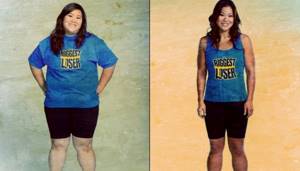
When gaining weight, fat deposition primarily occurs in the hips and waist, and only then does the face become fuller, i.e. fat mass gain occurs from the bottom up. When losing weight, the opposite phenomenon occurs: first, fat is burned from the upper parts of the body: the face, chest, arms, shoulders and necks lose weight, and then the hips and waist. But due to the physiological characteristics of each organism, other parts of the body can also lose weight.
httpv://www.youtube.com/watch?v=embed/Y0N8yanhJv0
Cholecystitis
With this disease, an inflammatory process occurs in the walls of the gallbladder. This is accompanied by serious dysfunction of the organ. The production of bile, which is necessary for the breakdown of fats, sharply decreases. Unprocessed lipids enter the bloodstream and then into urine.
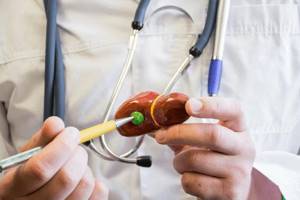
With cholecystitis, the concentration of bilirubin in the urine also increases. If the pathology is complicated by the formation of stones, then darkening of the urine is noted. This is a sign of obstruction of the bile ducts.
Nutrition to enhance the process of burning subcutaneous fat in the body
No matter how effective diets are, the most effective way to lose weight is proper nutrition. It has no time frame, proper nutrition is a lifestyle and its effect is designed for the long term, so you should know and adhere to the basic principles of proper nutrition. Here are some of them that directly affect the acceleration of the fat burning process.
- Fractional meals. This principle consists of increasing the number of meals up to 5-6 times and reducing the size of portions. This allows you to reduce the amount of food consumed and, as a result, calories, without harm or stress to the body. Due to fractional nutrition, the feeling of acute hunger is eliminated, the metabolic process increases and the absorption of nutrients improves.
- Water balance. To speed up the process of burning fat in the body, it is necessary to maintain water balance. To do this, you need to drink 1.5-2 liters of water per day. Water normalizes the functioning of the gastrointestinal tract, accelerates the metabolic process, increasing the metabolic rate by 30%
- Protein. In order to increase metabolism, it is necessary to increase the amount of protein consumed; much more energy is spent on its digestion than fats or simple carbohydrates, such as sugar; it is almost instantly absorbed by the walls of the stomach and does not saturate the body for a long time. As a result, we get a lot of calories, but the feeling of hunger remains the same.
- Breakfast. If your goal is to increase your metabolism to lose weight, you should never skip a hearty breakfast. The fact is that during sleep, metabolic processes in the body slow down and after waking up before the first meal, it only increases slightly, but the body remains in a state of “sleep”. Therefore, by skipping breakfast and eating only for lunch, your body burns much fewer calories than it could after a proper breakfast. Yes, that’s right, breakfast should consist of slow carbohydrates (porridge, vegetables, whole grain bread, etc.) with a calorie content of 300-400 units, this will “wake up” the body and its metabolic processes, moreover, complex carbohydrates take longer to digest, which is why you feel hungry will not disturb you until lunch. This does not mean that you will have to chew empty oatmeal all the time for breakfast, far from it, there are many breakfast recipes that are based specifically on complex carbohydrates. Experiment with dishes and your breakfast will not only fill you up, but also make you feel good.
Metabolism boosting foods
- Citrus fruits (grapefruit, lemon, orange, pineapple);
- Green tea;
- Dairy products;
- Coffee;
- Almond;
- Curry.
And this is not a complete list of products that speed up metabolism. Remember that everything needs moderation, therefore you should not eat only these foods, the diet should be varied and balanced, this is what the basic principle of proper nutrition says.
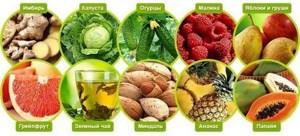
When does our fat start to burn?
The process of burning fat in the scientific literature is called lipolysis. This is a note for you. In fact, everything is extremely simple. Under normal conditions, the body is accustomed to obtaining energy from carbohydrates. But when a situation arises that there are not enough carbohydrates, our body begins to look for backup sources. The fats deposited throughout our body are just suitable reserve storage facilities. Therefore, to the question: “What is that sticking out from under your T-shirt?” You can safely answer: - Backup storage!
You also need to know that it is not only the lack of carbohydrates absorbed from food that is important! There is such a thing as calories. This is one of the units of energy measurement. So, in the process of life, we spend these calories. And to replenish them, we need to eat. Moreover, each of the products that we eat has a certain calorie content, which directly depends on its composition. You will soon find out what to do with these calories.

Let's draw the main conclusion from all of the above. To activate the fat burning process, we first need to create a calorie deficit. That is, consume less energy than we spend. In truth, this alone is already enough to lose weight. Yes, yes, you can eat sweets and still lose weight. But... not everything is so rosy.
And now on your fingers
Let's say you are a girl with a body weight of 70 kg (of which 10 kg are extra) and an inactive lifestyle. Your energy consumption is 1800 kcal per day. If you eat only sweets, then just a couple of meals will be enough to get the required 1800 kcal. Considering that you need to create a deficit, the volume of confectionery products consumed will further decrease by 20 percent. In addition, imagine what the shortage will be in the main macronutrients (proteins, fats and carbohydrates) and micronutrients (vitamins and minerals). It is unlikely that such drying will benefit you.
Next we have a reduction in carbohydrates in the diet. Why should we do this? - you ask. The fact is that with a lack of calories, your body begins to lose weight not only due to fat mass. Muscles are also used. To avoid this, you need to increase the amount of protein in your diet. But this must be done without changing the calorie content of your menu. This is where carbohydrates come to our rescue!
In addition to manipulations with nutrition, do not forget about training! First, they will increase your calorie expenditure, allowing you to use fat more efficiently as an energy source. Secondly, training will prevent muscle breakdown while dieting.
In order to speed up the fat burning process, it is recommended to add. After all, fat oxidation occurs in the mitochondria of muscle cells, and they work effectively with a sufficient supply of oxygen. It is cardio training that provides muscles with a large amount of oxygen.
Strength training doesn't target your fat, it targets your muscles. With their help, you can keep your muscles intact.

So, once again, point by point. In order to lose weight you need:
- Create a calorie deficit
- Reduce the amount of carbohydrates in the diet and increase the content of protein foods
- Work out (cardio + strength training)
What does fat break down into when losing weight?
Need to burn fat? Then urgently read this article and take notes!
Because it is CRITICAL to understand your body and what and why you do/eat/drink. Without knowledge of the basics, you will not see either health or beauty. By understanding what you eat, and most importantly - why and what consequences it brings - you will learn to control your diet and not suffer from the lack of “junk” food.
You will never lose weight and maintain the result if you do not understand the mechanism of fat breakdown. You can’t eat anything, eat according to someone else’s example, and hope that the fat will magically be burned: you don’t get behind the wheel without knowing the rules, do you?
Well, we have already used the term “weight loss” many times, found out what kind of fat is contained in our bodies and realized that it is worth getting rid of excess weight for the sake of a healthy and long life.
The process consists of several stages:
- Stage #1 : Fat is released from fat cells
- Stage #2 : Fat is transported to muscles
- Stage No. 3 : Some features of the process of burning fat in the body
So, let us repeat that our sides and tummies are energy reserves stored in the body in the form of fats. The body usually creates such reserves from excess nutrition.
If you lead a sedentary lifestyle, combining it with large meals, you have an insignificant energy expenditure with a large intake, i.e. consume more than you need and you can spend.
Everything that was eaten by you, but was not spent, our miser - the body will process into fat and put aside in reserve.
Nature is wise and caring, and once upon a time this mechanism for storing fat served people for the benefit, but now, when we no longer need to hunt for food and long hunger strikes do not happen to us (only if solely by our will), it brings some inconvenience.
How to take the right selfie or how to become a fit girl in 5 seconds?
There are fat cells in the body that contain fat and water, and when losing weight, it is this that is released first. Therefore, in the first stages of losing weight, the result is clearly visible. Fats are a reserve source of energy, so the body is not very willing to use them.
Many have noticed that as soon as they embark on the path of losing weight, the body becomes very soft, watery; if there was any relief, it disappears. People immediately get upset, they say, they were so elastic, but now they’re like a water mattress. But I hasten to tell you, this is exactly what you should be happy about ! Because softening of adipose tissue indicates your weight loss!
How is the fat layer reduced? Subcutaneous fat is a structure made up of fat cells. We already know that fat does not disappear locally and, accordingly, fat cells do not release accumulated fat in only one place. Roughly speaking, each cell “loses weight” a little!
Think of adipose tissue as a dense system of cells. If you “take” a piece of each, what will happen? The system collapses and becomes loose, because space appears between the cells. So rejoice, you are losing weight!
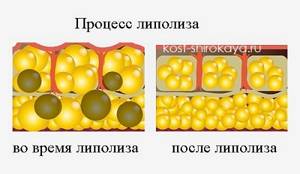
Adipose tissue
The way out of the soft state: wait until the tissues become denser and decrease in volume, i.e. continue to lose weight. Or quit and start eating more in order to thicken your tissues.
By the way, you can’t stay in a calorie deficit all your life. If your volumes suit you, but “you are watery”, you need to switch to maintenance (spend as many calories as you get)!
Take the test: Who are you at the gym?
When losing weight, we do not get rid of fat cells, but the fat that is in them. The more fat these cells have, the larger their size and mass. Fat cells can become very stretched. Scientists have now proven that the number of fat cells can change, but this change is insignificant.
So, the first thing you need to do when it comes to losing weight is to release fat from the cells . To do this, it is necessary that there is an energy deficit in the body. The body then releases special enzymes and hormones into the blood, which are transported through the bloodstream to the fat cells and release fat from the fat cell.
It is not difficult to create an energy deficit - you need to engage in any type of physical activity and adjust your diet .
Dear, I accelerated my metabolism or myths about “hyped” metabolism
So, the fat is released and transported along with the blood to the muscle . When it reaches this muscle, it needs to be burned in the mitochondria, the “power plants” of a person. And so that fat can burn, it needs enzymes and oxygen. If there is not enough oxygen or enzymes in the body, fat will not be able to be converted into energy and will be deposited in the body again.

This process is natural weight loss . Those. With the help of physical activity and a certain calorie intake, we create a surplus (lack) of energy and to replenish its reserves the body decides to use its own resources.
Yes, breaking down fat is not everything!
A very important point for understanding when losing weight is that the process of breaking down fat does not yet ensure weight loss. Therefore, by the way, it is worth questioning cosmetic procedures that promise to provide you with the breakdown of fat and the destruction of fat cells.
Dopamine addiction: how to relieve cravings for sweets, cigarettes, alcohol. Compulsive overeating
Once the fat is broken down, it still won’t go anywhere . It will simply go from the cell into the bloodstream and hang around there until something is done to it. Otherwise, it comes back, filling the fat cells again, or gets stuck with cholesterol plaques in the vessels, which can lead to irreparable health problems.
Therefore, even fat released from cells must be “burned.” This can be done by using it as fuel for muscle work. That is, to lose weight it is NECESSARY that the body receive physical activity, which would be accompanied by a large consumption of oxygen, and at the same time have all the necessary enzymes for burning fat (they are contained in food).
Let's not forget about water. This mechanism only works if there is a large amount of water in the fat cells, because the breakdown of fat occurs in the water-containing interior.
Let us repeat the above for better absorption: fat in our body is not stored as a solid mass, but is located in the form of a chemical triglyceride in fat cells , which are called lipocytes.
In order to release fat from its tenacious hands, the cell must first carry out lipolysis - break down triglyceride into fatty acids and glycerol. And only in this form the accumulated fat releases the cells and is sent through the blood vessels to its destination in order to perform the required function - supply the body with energy, build the cell membrane, etc.
The main hormones in the process of lipolysis are hormones . They are the ones who “open the door” of the cell to give it the opportunity to share the accumulated fat. The key point in this chain of interactions is that the hormones secreted by the glands circulate evenly through the bloodstream and control the fat cells. It is absolutely impossible to keep them in one place, for example, in the buttocks or abdominal area, forcing fat cells to “open” only there.
Moreover, in those very problem areas that you so badly want to lose weight locally, fat will be the most difficult and take the longest to come off . After all, despite the fact that hormones hover throughout the body at the same speed and in the same quantity, they cannot immediately “open” all cells - some of them have reduced activity of cellular receptors (the very “doors” that open the cell). In addition, lipolysis is also influenced by blood supply (capillarization), which provides greater blood flow capacity in the muscles and promotes the transfer of energy substances.
Those. alas and ah - you CANNOT burn fat LOCALLY. The ENTIRE body is involved in the process of fat loss, and we lose fat in “first come first served” (we remind you: first visceral - then subcutaneous - and only then fat deposits based on gender).
By the way, if you want to find out where fat is actually utilized, then read the article “Where does fat go when losing weight?” !

The perfect squat for your butt and toned butt
You cannot tell your body (alas) which fat reserves to use. Don’t believe me? Let's prove it!
- ⛔If you pump up your abs, the fat will not go away from your belly!
- ⛔If you pump up your adductors, the fat between your legs won’t go anywhere!
- ⛔If you pump your arms, the fat will not evaporate from them!
Even thanks to lipolysis, fat will first be removed from those areas of the body where it is accumulated in small quantities and where it is, in principle, inconvenient to be. And lastly - from problem areas where it is found in large reserves (in men - the abdominal area, in women - the lower abdomen, thighs and buttocks) and plays an important function for the body, for example, it is necessary for the reproductive system.
To cope with problem areas, it is necessary to carry out a comprehensive struggle of effects aimed at both reducing fat and increasing muscle elasticity and skin tone.
The best option for losing weight: a calorie deficit and going to the gym, coupled with an active daily life. Why the gym: “I’m afraid to oversize” or why people lose weight in the gym”
If for some reason strength training is contraindicated for you, then you can do cardio or any other physical activity! Skiing, skating, swimming, basketball and dancing, walking - all this burns calories, which means it burns fat.
But without nutrition control, you won’t get rid of a single gram with any training , if the nutrition is really fundamentally wrong.
Fructose: is it possible to eat fruit and lose weight?
There are two main sources of energy in the body - glycogen and fat. Glycogen is a more powerful source and easier to convert into energy than fat. That is why the body tries to burn it first, and only then does it get to fat.
The energy we consume (fats, proteins, carbohydrates) is used as fuel in the following way. Typically, at rest or during prolonged low-intensity activity, the average person burns approximately 60% fat , 35% carbohydrates and 5% protein . As soon as a person begins to engage in physical activity , the metabolic process in the body changes, fat metabolism slows down, and carbohydrate metabolism increases . We took the fat/carbohydrate scheme as a basis, because protein is usually practically not a source of energy, with rare exceptions, for example, during hunger.
The table below shows the training regimen and its effects for a 30-year-old man weighing 90 kg. The duration of one workout is 30 minutes, the type of workout is treadmill running, three different degrees of intensity.

This is where the nuance lies: it is important not to confuse the percentage of fat burned and the total amount of fat burned . Look at three fat consumption options at three different intensity levels, and tell me which burns more fat:
- High-impact exercise (around 70-90% of your maximum heart rate): 33% of the energy you use comes from fat, 66% from glucose. You burn about 600 kilocalories per hour (of which 200 kilocalories are fat). Of course, you don’t work out that much, but still.
- Moderate exercise (about 50-60% of maximum heart rate): The percentage of fat and glucose used is “50 x 50”. You burn about 350 kilocalories per hour (of which 175 kilocalories are fat).
- At rest, sitting, during long, low-intensity exercise (resting heart rate): 66% of the energy you use comes from fat, 33% from glucose. You burn about 90 kilocalories per hour (of which 60 kilocalories are fat).
CONCLUSION : Most of us can do high-impact exercise for no more than an hour, but can do several hours of low-impact exercise. Low-impact exercise over a long period of time only burns more fat if you do it for a long time, rather than for half an hour. However, low-impact exercises often have less significant overall health benefits and do not train the cardiovascular system. If you can devote two hours to aerobic exercise, the best option is to take advantage of both types of exercise - 1 hour of high-impact exercise and 1 hour of low-impact exercise.
No type of training burns only fat. Read more about this in the article “Cardio or strength training: the best conditions for burning fat. Energy for muscle work"
10 Best Psychology Books You Should Read
1. Our body is not able to burn fat only in a certain place.
2. Excess fat can only be burned as energy. to remove it with a massage or pump it into the muscles ! (learn materiel)
3. Men and women do not need a separate training and nutrition program. Our bodies burn fat the same way!
4. The stomach, sides and riding breeches are the ideal place to store fat, so they will be the last to lose weight.
It must also be taken into account that each person has genetic characteristics. Therefore, for some, fat is best removed from the thighs, and for others, from the abdomen. This can happen even with absolutely the same training process and nutrition system - this is individual.
5. Wide bones exist , but this has nothing to do with being overweight.
Dopamine addiction: how to relieve cravings for food, cigarettes, alcohol. Compulsive overeating
Where does fat go when a person loses weight? Some people think that it comes to the surface of the skin with sweat, so they train in cling film and sauna-effect belts. Others believe that fat turns into muscle. But it turned out that the fate of fat is poorly understood not only by ordinary people losing weight, but also by therapists, nutritionists and fitness trainers. Professor Andrew J Brown and scientist Ruben Meerman surveyed a total of 150 representatives of these professions and published the results in the British Medical Journal.
Despite the growing interest in the topic of losing weight, not everyone still understands what happens to fat. If we remove the most mythological answer options, more than half of the specialists from each group - nutritionists, therapists and fitness trainers - answered that fat is converted into energy, although this violates the law of conservation of mass of matter. The authors suggested that this is a result of the well-known mantra “To lose weight, you need to expend more energy than you consume.” This result showed large gaps in school education.
In 1748, Lomonosov substantiated the law of conservation of mass of a substance, which sounds like this: “The weight of all substances that enter into a reaction is equal to the weight of all reaction products.” Mass cannot disappear into nothingness and turn into energy. As much mass was at the entrance, so much remains at the exit.
When we eat more than normal, the excess carbohydrates and proteins are converted into triglycerides and stored in fat cells. Excess fat in food does not require any transformation and is also stored in adipocytes. A fatty acid molecule consists of carbon atoms - C , hydrogen - H and oxygen - O , and its formula looks like this: C55H104O6. In order for fat to “burn”, it needs oxygen.
When fat is burned, it oxidizes, reacting with oxygen. The same thing, with minor amendments, happens when burning firewood, paper and, in general, almost any organic compounds. In the case of firewood, high temperature is needed so that oxygen begins to react with the molecules of the wood. In a living cell, you cannot bring a match to a molecule, so oxidation is catalyzed by special proteins, but the principle is the same.
Alexandra Bruter, employee of the Institute of Molecular Biology of the Russian Academy of Sciences
The process of oxidation of one fat molecule consists of many complex steps under the influence of oxidative enzymes, but in general, it looks like this:
C55H104O6 + 78O2 → 55CO2 + 52H2O + energy
All this chemistry, complicated for an ordinary person, only says the following: under the influence of oxygen, a fat molecule breaks down into carbon dioxide and water, releasing energy. Fat is not converted into energy. Energy is stored in the chemical bonds between atoms in a molecule. When a molecule breaks apart, the energy that was holding the atoms together is released. The body uses it.
The released atoms combine with oxygen to form carbon dioxide and water. This is what fat turns into. Carbon dioxide leaves the body with respiration, water leaves with urine, sweat and also through respiration. Thus, most of the former fat is eliminated through the lungs. In a sense, the lungs are the main fat-removing organ.
To lose 10 kg of fat, you need to inhale 29 kg of oxygen, exhale 28 kg of carbon dioxide and remove 11 liters of water from the body in different ways.
The conclusion that comes to mind is: if you need oxygen to lose weight, do you need to breathe more/deeper/more often to lose weight faster? There are even breathing and weight-loss training methods that promise rapid weight loss - the famous bodyflex, for example.
In reality it doesn't work like that. Energy is taken from fat exactly in the amount that the body needs, that is, according to needs. Oxygen is one of the conditions for fat combustion, but this is not the trigger for its extraction from fat cells. And the process of losing weight begins precisely with this: fat must first be removed from the cells, and hormones are responsible for this. The signal is given to them by the central nervous system, which sees a lack of energy. Forced breathing only leads to hyperventilation, dizziness, rapid heartbeat, and sometimes fainting.
Fat does not come to the surface of the skin with sweat, so exercising in cling film and a sauna suit is pointless and dangerous. Fat does not turn into muscle; there is no such mechanism in the body.
But fat does not turn into energy either - this violates the law of conservation of mass of matter. Energy is stored in the chemical bonds between atoms in a molecule. When a molecule breaks apart, the energy that was holding the atoms together is released. The body uses it. The released atoms combine with oxygen to form carbon dioxide and water. It is in them that fat turns and leaves the body.
There are many theories heard about the adventures of fat in the human body. Ordinary people who have not delved deeply into the topic most often believe in the theory of “pumping fat into muscles.” It is very attractive (the fatter you are, the greater the potential for muscle growth) and logical (according to the law of conservation of mass of matter).
Unfortunately, our body does not have mechanisms to convert fat into muscle. Thus, the theory is flawed at its very core. And I really wanted a miracle - I went to the gym, pulled weights and turned my fat into muscles. Yeah, keep your pocket wider!
More advanced comrades believe that fat is converted into pure energy and heat. But this is already something from the field of physics at the “ E=mc2 ” level. Man is not a thermonuclear reactor for this kind of transformation. Otherwise, everyone losing weight would be a potential nuclear bomb, because even the smallest mass of matter is a huge amount of pure energy. For example, the mass of a AA battery in the form of energy is equivalent to 250 billion of the same batteries that release their energy in a standard way.
So where does fat go and what does it turn into when we lose weight? Let's figure it out, since understanding the processes occurring in our body will allow you to build your training schedule much more effectively to lose excess weight.
I am not exaggerating the myths about fat burning in our body. Moreover, this applies not only to ordinary people, most of whom are far from issues of sports and nutrition. Experts also often believe in strange things.
So, in 2014, the British Medical Journal published an entertaining study by scientists Andrew Brown and Reuben Mirman , who asked 150 therapists, nutritionists and fitness trainers about the topic mentioned.
As you can see, more than half of the experts promote the theory of “clean energy”, easily turning those losing weight into walking nuclear bombs. A tenth of the trainers and nutritionists surveyed have no assumptions at all regarding the ways in which fat disappears. Most of the other comrades believe in complete nonsense. Among them there are clearly many who like to wrap a client in cling film and put him on an exercise bike.
First, let's turn to the school curriculum and the law of conservation of mass of matter in particular. It was substantiated by Mikhail Lomonosov back in 1748: “The weight of all substances that enter into a reaction is equal to the weight of all reaction products.”
Now let's look at the chemical formula for the oxidation of a fat molecule:
When burning fat, it is its oxidation that occurs, that is, a reaction with oxygen. In fact, the same processes occur when burning paper, firewood and other organic matter, with the only difference being that in the latter case a high temperature is needed for the reaction of oxygen with the molecules of the mentioned substances, and in the body the role of a match and fire is taken on by special enzymes and proteins.
Simply put, under the influence of oxygen, fat breaks down into carbon dioxide and water, simultaneously releasing energy . Carbon dioxide is eliminated through the lungs, water is excreted through sweat and urine, and energy is used to power the body.
A more visual example is shown in the diagram below:
Let me explain: to get rid of 10 kg of fat, you need to inhale 29 kg of oxygen, exhale 28 kg of carbon dioxide and remove 11 liters of water from the body. And one more important detail - to implement such a daring plan it is necessary to spend more than 90 thousand kcal.
That is, you won’t be able to breathe a lot and get rid of fat in this way, as some breathing and weight loss techniques like bodyflex promise. Oxygen is only one of the conditions for burning fat, but it is not the trigger for its extraction from fat cells.
To start fat burning processes, you need hormones and a number of conditions for their production. If they are not met, then muscle burning processes will begin. In this case, the result on the scale may be good, but in the mirror it will be terrible. There is also a possibility of causing harm to the body, and in the future, regaining lost kilograms, but not in the form of muscles, but the same ugly fat and excess water, that is, edema.
I wrote a lot of articles about this in the Healthy Lifestyle section and spoke about it as part of the BeardyBuilding podcast, so I won’t go deeper into the topic, but will only clearly demonstrate the mechanism for setting the body up to work effectively. This will help beginners avoid mistakes, and experienced comrades will help change their current training regimen if their results stagnate.
A balanced diet with a reasonable calorie deficit so that the body needs to make up for the lack of energy from its reserves. I talk about this in detail in the video below:
The release of fatty acids into the blood from adipocytes , that is, fat cells. After all, to meet energy needs, the body does not take fat directly from the abdomen and other loin areas. First, fatty acids enter the blood and only then are used to benefit the cause, or are returned back to storage places if the need for energy does not reach certain heights.
They enter the bloodstream under the influence of adrenaline and norepinephrine, the production of which is a response to physical stress in the form of working with weights. That is, you need strength work in the gym , and it gives a lot of other advantages besides what was mentioned. Three strength training sessions per week is usually sufficient.
Beginners losing weight even build muscle mass in the process (and this ultimately results in a beautiful body shape). More experienced comrades preserve muscles during drying, not allowing the body to waste them along with fat. Plus, this is an additional energy consumption, since glycogen (muscle fuel) is spent, which is then restored, including from body fat reserves. Plus, metabolic processes are accelerated, the rate of protein synthesis increases - all this also increases energy consumption.
Cardio at low and medium intensity (pulse 120-160 beats/min, calm deep breathing). Strength work gave a large amount of fatty acids in the blood, but it is not a fact that all of them will be used. Yes, some will be converted in a roundabout way into fuel for high-intensity work, and some will be stored in the muscles for low-intensity work. The remaining fatty acids will either return to storage or be used during cardio.
An hour of work on a treadmill or orbitrack on days off from strength training or 20-40 minutes after them is enough. In general, the ideal schedule is three strength training sessions per week and two one-hour cardio workouts.
Fulfill all three conditions and turn your body into an efficient fat-burning plant. How effective? With reasonable training, a balanced diet, periodization of the load and changing training programs as needed, you can completely change yourself in 4-6 months.
A joke, of course, but every joke has some truth. After all, all carbon dioxide exits through the lungs, into which fat is partially converted.
In general, the idea and purpose of this article is to show the real mechanism of fat breakdown in the body and the ways of its removal, which will eradicate a number of myths, including those dangerous to health.
For example, training in cling film is ineffective. After all, fat does not come to the surface of the skin with sweat. Anti-cellulite creams and massages by themselves are also useless and, at best, will give a temporary effect of skin tension.
Fat does not turn into muscle because there is no such mechanism in our body. I would like to have it. Maybe in the future they will come up with some genetic modifications for this, but for now, don’t bother yourself with nonsense.
At the same time, fat is not converted into pure energy. It only disintegrates with the release of energy stored in the chemical bonds between atoms in the molecule. In addition to energy, carbon dioxide and water are produced - they make up the lion's share of kilograms leaving our body.
So lift weights, run, eat a balanced diet and pretty quickly you will get back to normal, after which you will begin to improve your life on all fronts. But you will notice improvements in health literally from the first months of training.
Author on Twitter, Facebook, Instagram, VK
Stay on topic. Subscribe to
our Telegram


